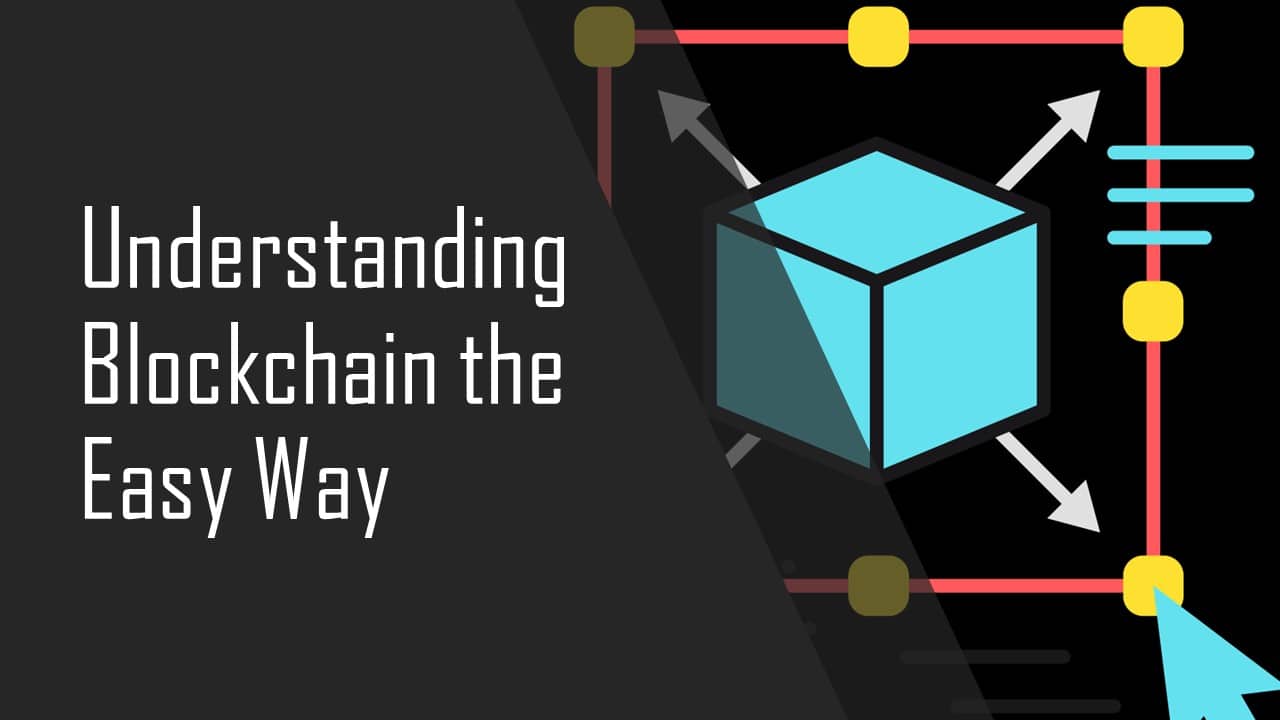
ApplicationsBlockchainProduct Development 

Understanding Blockchain The Easy Way
There is a lot of talk about blockchain, these days. This makes us wonder what is this disruptive technology all about? No matter how much you read up on it, it still seems rather complex to some of us. This post looks at understanding blockchain the easy way. Analogies help manifold. So, that is what we are going to use.
Understanding blockchain through analogy
I am going to quote, William Mougayar here, who helped put blockchain in a very simple manner. He used the example of Google Docs to help understand how blockchain works.“The traditional way of sharing documents with collaboration is to send a Microsoft Word document to another recipient, and ask them to make revisions to it. The problem with that scenario is that you need to wait until receiving a return copy before you can see or make other changes because you are locked out of editing it until the other person is done with it. That’s how databases work today. Two owners can’t be messing with the same record at once.That’s how banks maintain money balances and transfers; they briefly lock access (or decrease the balance) while they make a transfer, then update the other side, then re-open access (or update again).With Google Docs (or Google Sheets), both parties have access to the same document at the same time, and the single version of that document is always visible to both of them. It is like a shared ledger, but it is a shared document. The distributed part comes into play when sharing involves a number of people. Imagine the number of legal documents that should be used that way. Instead of passing them to each other, losing track of versions, and not being in sync with the other version, why can’t *all* business documents become shared instead of transferred back and forth? So many types of legal contracts would be ideal for that kind of workflow.You don’t need a blockchain to share documents, but the shared documents analogy is a powerful one.” -William Mougayer, 4x entrepreneur, venture advisor, marketer, blockchain specialist.
Blockchain ensures data security
Blockchain enables digital data to be distributed across a network of nodes, where this data/transaction is validated individually at each node. This particular piece of data or transaction is irreversible. Since it is available across locations, means that the data is not centralized and as such very much public.Blockchain: An Undeniable Opportunity to Revolutionize Business OperationsThis makes blockchain a rather secure technology. The information stored at various nodes in a network makes it difficult for a hacker to hack it. Hackers generally go for centralized information, as corrupting a single location is an easy task. But accessing and corrupting multiple locations/nodes to simply corrupt one transaction does not make a lot of sense. It would also require a mammoth computing power to corrupt all the nodes in the network. Although hacking into the entire system might seem like a possibility, but it is only so in theory and not in real life. If not impossible, it is pretty unlikely.
How does Blockchain work?
Although you really don’t need to known how blockchain works in order to actually use the technology, but it is always good to know. Think of a document that has been distributed throughout the network. Each time the information in this document is updated the changes are made across all the nodes that possess the document. Each change is validated and verified using known algorithms. This network-wide update makes the change irreversible. The earlier versions are still available to the people who are accessing it for their reference.Where does blockchain derive its name from?
Blockchain, earlier known as block chain, is as the name indicates a chain made of a number of blocks. Each block contains a number of transactions, each of which is verified by the different nodes across the network. The different blocks together form a ledger, which is nothing but a group of transactions which have been verified and stored. Each new block that is created is then added to the already existing chain, thereby creating a blockchain.How does the node system work?
The different nodes across the network for a decentralized system of storing information. The nodes are connected through a Peer-2-Peer network. Each time there is a transaction, it is broadcast on this network. The nodes works in tandem to verify the transaction using known algorithms. Once verified, the transaction is added to other existing transactions to create a block. Once this new block is added to the existing chain, the transaction is complete, permanent, and unalterable. Watch this space for more information and news on blockchain, its uses, and what makes it so disruptive.Schedule an appointment today and receive a complimentary consultation.
About Author
